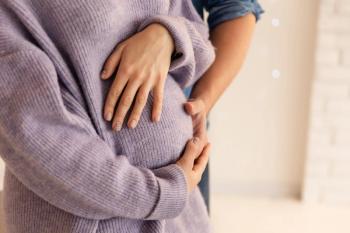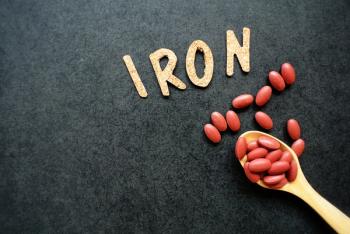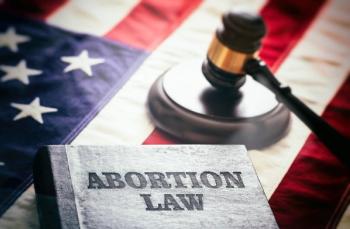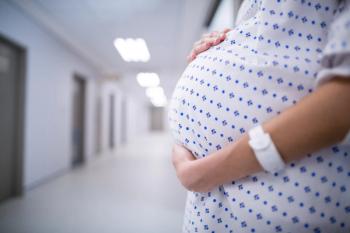
- Vol 64 No 11
- Volume 64
- Issue 11
Uterine allografts: A new era in reproduction
Pioneers in uterine transplantation provide an update on an investigational procedure that holds promise for women with absolute uterine factor infertility.
Uterine transplantation (UTx) has rapidly moved from a theoretical construct to a clinical reality. Over just the past 5 years, the world has witnessed several notable milestones in this quickly-evolving field. With healthy live birth being the ultimate goal of a reproductive transplant, the 14 babies born to date following UTx for which reports exist and the additional ongoing pregnancies represent proof of concept for the viability of this experimental procedure.
Options for AUFI
UTx represents the first and only treatment for women with absolute uterine factor infertility (
AUFI Milestones
The advent and rapid ascent of UTx have been marked by innovation. Initial international attempts in humans performed outside of clinical trials were not successful, and technical success for the Swedish team was ultimately achieved following decades of preparatory work in small mammals and non-human primates. As with any new surgical procedure, the technical elements have quickly advanced and evolved (Table 1).
In case you missed it:
Together with documented technical success and increased media attention has come improved public perception and enhanced physician awareness and support for the procedure. Sixty percent of A
Slow initial acceptance of UTx may be due to the fact that, unlike other transplants, UTx is not a life-saving transplant. Like face, hand, and other vascularized composite allographs, the uterine transplant can be life-enhancing and indeed can be life-giving. Also distinct from other known organ transplants, UTx is an “ephemeral” transplant.13 This means that the uterus will be removed after one or two live births are achieved and is not intended to be a lifelong transplant. This means that women receiving a UTx will not be exposed to immunosuppression once the uterus has been removed after childbearing.
Despite growing numbers of live births, UTx remains a significant undertaking for both recipients and living donors. The procedure for donor hysterectomy is similar to radical hysterectomy, and donor complications have been reported in the literature.14,15 Historically, donor surgeries have involved long operating room times (10-13 hours in the original Swedish series) and large incisions, although this may change as laparoscopic and robotic approaches are pioneered. Although a deceased donor model obviates this risk completely, most live births to date have been achieved with living donors. Deceased donor UTx represents a more ethical choice by eliminating donor risk, however, it has the limitations of organ availability, less convenient scheduling, and more restricted medical history on the donor.1 It is unknown how outcomes from deceased donor trials will compare with living donor trials and whether one approach will demonstrate superiority over the other or whether both approaches will coexist. Recent studies suggest no recipient preference for a living vs a deceased donor.2
Risks of UTx
Risks to the recipient are also currently being determined in clinical trials. The major risk is hysterectomy, due to either infection or graft thrombosis. Although data on clinical outcomes and complication rates are still very limited, in the original Swedish trial, two of nine patients (22%) required hysterectomy prior to attempted embryo transfer.5 After IVF to create embryos and listing for transplant, the recipient must undergo three or four separate major abdominal procedures including uterine implantation, cesarean delivery (possibly x 2), and then hysterectomy to remove the graft. In addition, immunosuppression in the recipient carries risks and side effects during treatment that a young and healthy woman would not normally need to manage. Registries of pregnancy with other solid organ transplants have supported the safety of the immunosuppressive regimens used for UTx in relation to fetal and neonatal well being.
Careful screening, selection and counseling of UTx recipients and their families is necessary in the context of a clinical trial. As such, a UTx team must consist of a broad range of subspecialists at an academic center with a capability for longitudinal follow-up (Table 2). At this point, uterine transplant is still experimental and should only be conducted under an IRB-approved research program.16 As “success” with uterine transplant has multiple endpoints (graft viability, onset of regular menses, and embryo implantation, pregnancy, and ultimately delivery of a healthy neonate) that may occur over several years, a multidisciplinary team must be in place that can conduct years of surveillance of mothers and infants.
Technical considerations
Many aspects of a UTx program are complex, but by far the most challenging aspect is surgical retrieval of the uterus and implantation of the graft into the recipient. Development of safe surgical techniques that optimize graft performance is of great interest within clinical trials of UTx, including our own at the
In a living donor model, obtaining adequate vascular support for the transplanted uterus must be balanced against potential risky dissections in the deep pelvis, which can compromise the ureter, nerves, or blood vessels in this area of the donor. Genitourinary complications have been reported in living donor trials from Sweden, Texas, and Saudi Arabia.14,15 The major difficulty is complex dissection of the uterine vessels, notably the branching uterine veins that lie in proximity to the ureter. Due to these concerns and reported injuries, the exclusive use of the utero-ovarian vein has been successfully applied and has resulted in a live birth in the United States.14 Use of these kinds of vessels has made an easier transition to development of laparoscopic and robotic approaches as well.6-8
The future of UTx
Given the rapid pace of the last 5 years, what will the next decade hold for this dynamic and innovative field? We anticipate ongoing progress and refinements in the spirit of innovation that characterized development of this reproductive procedure. Living donor surgeries are already becoming shorter and less risky, involving more minimally invasive techniques such as robotics and laparoscopy and innovative vascular support that avoids extensive pelvic dissections in donors. Women (mothers, sisters and friends) should not have to feel pressure to undergo lengthy and potentially risky surgeries to help alleviate suffering of a loved one with AUFI. We can envision that donor procurement may evolve to a 4- to 6-hour completely minimally invasive hysterectomy with a one-night hospital stay and relatively low risk of complications. However, in pursuit of minimally invasive approaches using the ovarian vessels, we must be cautious to avoid removing the ovaries in donors, as this can have significant long-term health consequences.17
In deceased donor studies, we anticipate additional live births from our center and others. With more births from deceased donor transplants, we will be able to more directly compare outcomes related to deceased versus living donor models. Further bioethical analysis will be needed to consider risks to mothers, offspring, and donors/donor families. Reducing ischemia time and increasing the availability of suitable donor uteri (e.g., using “increased-risk” donors, widening recovery radius), and enhancing preservation and perfusion techniques to reduce the effects of ischemia are key areas of interest.
For recipients, we anticipate reduced immunosuppressive regimens and shorter times to embryo transfer to reduce exposure to immunosuppression. As additional reassuring data on obstetrical and neonatal wellbeing emerge, we anticipate more widespread understanding and acceptance among physicians and the general public. International organizations such as the
Further areas for future discussion will include options for spontaneous pregnancy with tubal transplant along with the transplanted uterus, the likely emergence of uterine transplant for trans women, and the possibility of a bioengineered uterus or uterine xenotransplantation.
Conclusion
Although UTx remains a technically challenging and complex undertaking, our comprehension of this procedure has made extraordinary progress in a very brief time. Insights and basic science efforts for UTx research extend beyond uterine transplantation itself; in doing this work we may begin to apply our understanding to mechanisms of embryo implantation, early pregnancy and uterine receptivity, reproductive and placental immunology, and numerous other aspects of obstetrics and gynecology. Although the field is still early in its evolution, UTx is leading us into a new and exciting era of reproductive transplantation which has wide-ranging applications.
Disclosures:
The authors report no potential conflicts of interest with regard to this article.
References:
- Flyckt RL, Farrell RM, Perni UC, Tzakis AG, Falcone T. Deceased donor uterine transplantation: innovation and adaptation. Obstet Gynecol. 2016 Oct;128(4):837-42.
- Richards EG, Agatisa PK, Davis AC, et al. Framing the diagnosis and treatment of absolute uterine factor infertility: Insights from in-depth interviews with uterus transplant trial participants. AJOB Empir Bioeth. 2019 Jan-Mar;10(1):23-35.
- Brännström M, Johannesson L, Bokström H, et al. Live birth after uterus transplantation. Lancet. 2015 Feb 14;385(9968):607-616.
- Kuehn, B.M. 2017. US uterus transplant trials under way. JAMA. 317, no. 10 (March 14): 1005-1007.
- Brännström MP, Dahm Kähler R, Greite J, et al. Uterus transplantation: a rapidly expanding field. Transplantation. 2018;102(4): 569-577.
- Wei L, Xue T, Tao K-S, et al. Modified human uterus transplantation using ovarian veins for venous drainage: the first report of surgically successful robotic-assisted uterus procurement and follow-up for 12 months. Fertil Steri. 2017;108(2): 346-356.e1.
- Puntambekar S, Puntambekar S, Telang M, et al. Novel anastomotic technique for uterine transplant using utero-ovarian veins for venous drainage and internal iliac arteries for perfusion in two laparoscopically harvested uteri. J Minim Invasive Gynecol. 2019;26(4):628-635.
- Puntambekar S, Telang M, Kulkarni P, et al. Laparoscopic-assisted uterus retrieval from live organ donors for uterine transplant: our experience of two patients. J Minim Invasive Gynecol 2018;25(4): 622-631.
- Ejzenberg D, Andraus W, Baratelli Carelli Mendes LR et al. Livebirth after uterus transplantation from a deceased donor in a recipient with uterine infertility. Lancet. 2019;392 (10165): 2697-2704.
- Hariton,E, Bortoletto P, Goldman RH, Farland LV, Ginsburg ES, Gargiulo AR. A survey of public opinion in the united states regarding uterine transplantation. J Minim Invasive Gynecol. 2018;25(6): 980-985.
- Bortoletto P, Hariton E, Farland LV, Goldman RH, Gargiulo AR. Uterine transplantation: a survey of perceptions and attitudes of american reproductive endocrinologists and gynecologic surgeons. J Minim Invasive Gynecol. 2018;25(6):974-979.
- Rodrigue JR, Tomich D, Fleishman A, Glazier AK. Vascularized composite allograft donation and transplantation: a survey of public attitudes in the United States. Am J Transplant. 2017 Oct;17(10):2687-2695.
- Flyckt R, Davis A, Farrell R, Zimberg S, Tzakis A, Falcone T. Uterine transplantation: surgical innovation in the treatment of uterine factor infertility. J Obstet Gynaecol Can. 2018 Jan;40(1):86-93.
- Testa G, Koon EC, Johannesson L, et al. Living donor uterus transplantation: a single center’s observations and lessons learned from early setbacks to technical success. Am J Transplant. 2017 Nov;17(11):2901-2910.
- Johannesson L, Kvarnström N, Mölne J, et al. Uterus transplantation trial: 1-year outcome. Fertil Steril. 2015;103(1):199-204.
- Practice Committee of the American Society for Reproductive Medicine. American Society for Reproductive Medicine position statement on uterus transplantation: a committee opinion. Fertil Steril. 2018 Sep;110(4):605-610.
- Flyckt R, Farrell RM, Falcone T. Advancing the science of uterine transplantation: minimizing living donor risk on a path to surgical innovation. J Minim Invasive Gynecol. 2019 May - Jun;26(4):577-579.
- Tummers P, Göker M, Dahm-Kahler P, et al. Meeting report: first state-of-the-art meeting on uterus transplantation. Transplantation. 2019 Mar;103(3):455-458.
Articles in this issue
about 6 years ago
Endometriosis for the generalistabout 6 years ago
When is it time for the ob/gyn to assume care?about 6 years ago
Reproductive health care in America: A story of give and takeabout 6 years ago
Preterm birth phenotypes in women with autoimmune diseaseabout 6 years ago
STDs on increase in CDC reportabout 6 years ago
Sexual minority women and contraceptive useabout 6 years ago
Early menopause and risk of CVDNewsletter
Get the latest clinical updates, case studies, and expert commentary in obstetric and gynecologic care. Sign up now to stay informed.









